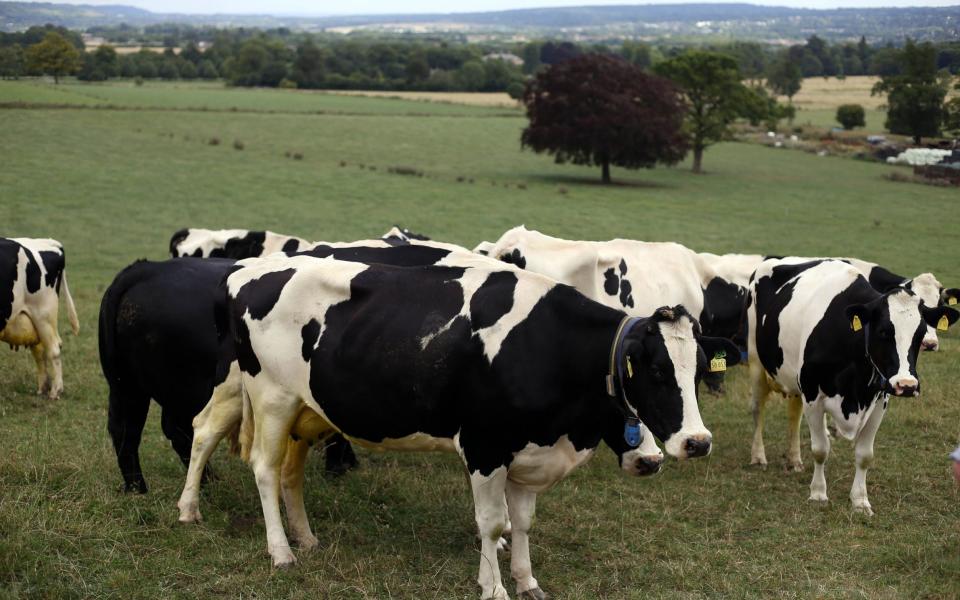A person in Texas has caught bird flu from a cow, raising concerns that the highly pathogenic H5N1 is becoming more active.
In a health alert Monday, Texan health officials said a dairy worker developed mild conjunctivitis, or ‘pink eye’, after close contact with a dairy herd. Tests later confirmed they had contracted H5N1, in only the second human case in America.
The case adds a “significant” new dimension to an unprecedented outbreak that has already hit the globe, raising questions about whether the virus is evolving to better infect mammals and humans.
“[The] Infection in a person with exposure to sick animals is not surprising, but [is] worrisome,” said Dr. Jennifer Nuzzo, director of the Pandemic Center at Brown University School of Public Health in the US.
Writing on X (formerly Twitter), she said that the situation is “significant” because the “geographic and species” expansion “increases concerns about the future ability of the virus to infect people”.
In recent years, H5N1 has killed millions of wild birds and poultry around the globe. But in a series of unexpected developments, it has also jumped to animals including cats, bears, foxes, mink and sea lions. This has raised concerns that the virus may have room to evolve to better infect and spread between mammals – and possibly humans too.


Cows were added to that ever-growing list last week, when the United States reported H5N1 infections in dairy herds. Since then, cases have been confirmed or are being investigated in five states – Texas, Kansas, Michigan, New Mexico and Idaho.
While cows can get other types of flu and a 2008 study found that cattle could get H5N1, this is the first time the virus has been found in herds.
Although the cows do not become seriously ill, there is now a race to find out whether they were infected through wild birds – which have been found dead on some farms – or whether the virus has started to spread between herds, which has not yet been proven. . do not rule out.
It would be a concern if the virus changed to spread more easily between cows.
Scientists are also trying to determine how widespread the virus is in cattle, with calls for heightened surveillance in the US and beyond to better understand the situation.
“We should really test it in Europe as well to understand how widespread such infections are,” said Professor Isabella Eckerle, co-Head of the Center for Emerging Viral Diseases in Geneva. “[This] it doesn’t mean it will cause an outbreak… but if cows are infected the risk increases due to closer contact between humans and animals (vs wildlife).
On Monday, the Texas Department of State Health Services said the infected person is being treated with the antiviral flu drug oseltamivir, sold as Tamiflu, and that their condition appears to be mild. They are currently in isolation, and health officials have emphasized that “the situation does not change the risk to the general public, which is still low”.


“We are not aware of reports that any of this person’s close contacts have developed any symptoms,” Nirav Shah, principal deputy director of the US Centers for Disease Control and Prevention (CDC), told STAT News. “It’s encouraging that no further samples are currently being cooked up… [but] We are still out there looking, to be very clear. Our antennae are up.”
Professor Sam Scarpino, professor of Practice in Health Sciences and Computer Science at the University of North East Ireland, said the list of symptoms is positive. Conjunctivitis is a common symptom of bird flu in humans, as our eyes contain “bird-friendly” receptor cells.
“Reports from Texas indicate that the person had direct contact [with] was infected and has minimal symptoms other than eye inflammation. This is great for the patient, ie no pneumonia, and to be known the virus is not able to move easily from person to person,” he said on X.
Professor Scarpino said he would be more concerned if this case came through pigs, known as “evolutionary laboratories” for flu, because they contain avian and human cell receptor types in their airways and lungs – which would increase the prospect of your viruses merging into something new.
Bird flu is known to jump to humans from time to time, but usually through birds directly. Three cases have been reported in Cambodia so far this year, and a 21-year-old student died last week in Vietnam. In total, almost 900 people have contracted the virus in 23 countries since it was first detected in 1997, and just over half of these cases have been fatal.
While outbreaks in poultry flocks result in large-scale killing in an attempt to minimize the spread, this seems unlikely to happen to cattle. The CDC has so far told the farmers whose herds are involved to destroy the milk produced by infected cattle, even though the pasteurization process is thought to kill the virus as well.
Protect yourself and your family by learning more about it Global Health Security